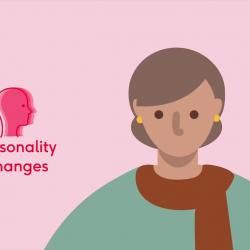Stroke occurs when the blood supply to a part of the brain is suddenly blocked or diminished, altering the body function controlled by that area of the brain. If any part of the body - including the brain - is without a source of fresh blood and oxygen, the cells will be injured and may die. Although some cell injury is reversible, the death of brain cells is permanent, usually leaving lasting disability.
Each year about 110,000 people in the UK have a stroke. Most are over 65 but a stroke can occur at any age, even in childhood. The risk of stroke is increased in people with high blood pressure, heart disease, diabetes or raised blood cholesterol. It is the third most common cause of death in the UK. More than 900,000 UK citizens live with disabilities caused by stroke, over half being dependent on others for help with everyday life.
There are three main types of stroke:
- Thrombotic – the most common, caused by a clot that forms in an artery that may already be partially obstructed by the build-up of a plaque of atherosclerosis (fat) in its walls and blocks the flow of blood.
- Embolic – caused by a circulating piece of a clot that lodges in a blood vessel in the brain. The clot forms elsewhere in the body, usually in the heart, and moves freely until it reaches the small vessels in the brain and cannot move further. Rarely, embolic stroke is caused by fat or air lodging in the brain after entering the blood stream following serious injury.
- Haemorrhagic – may be caused by the rupture of a blood vessel within the brain or between the brain and the skull. The rupture may be of an aneurysm - a weak spot in the artery wall - or result from head injury. An aneurysm may be caused by a congenital defect, high blood pressure or atherosclerosis. Haemorrhagic strokes are the most severe and are often fatal. The chance of a full recovery is less than that for the other two types.
The most common symptoms of a stroke are:
- sudden numbness, weakness, or paralysis on one side of the face
- inability to move the arm and/or leg on one side of the body
- loss of speech or trouble talking or understanding what is said
- sudden blurred vision, dizziness, loss of balance
- severe, unexplained headache
Click here for a complete list of stroke symptoms and signs.
Many strokes are preceded by one or more mini-strokes (called transient ischaemic attacks or TIA’s) in which symptoms are mild and disappear within 24 hours. A TIA should act as a warning to seek medical attention immediately.
There are no specific laboratory tests for stroke, but the laboratory may be requested to analyse blood glucose, urea and electrolytes immediately. The blood lipid profile and tests for the causes and consequences of hypertension (high blood pressure) may be requested in the longer term.
Treatment of stroke depends on the areas affected and the damage done. With strokes caused by blood clots, the use of “clot busting” drugs (as used in treating heart attacks) can be helpful in the early stages. Before giving such drugs the patient’s clotting system is usually tested with a full blood count, including platelets, a prothrombin time and an activated partial thromboplastin time. Sometimes anticonvulsant drugs are used in conjunction with other treatments.
Early treatment is essential to limit brain damage. In May 2019 the UK National Institute for Health and Clinical Excellence (NICE) published Guidance about the diagnosis and management of acute stroke and transient ischaemic attacks. The guidance stated that because rapid treatment improves outcome after a stroke or TIA, all patients with a suspected stroke should be admitted immediately to a specialist stroke unit. It is therefore critical that anyone with the sudden onset of symptoms suggestive of stroke or TIA should be brought to medical attention urgently by dialling 999.



